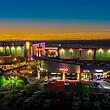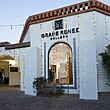Last week I shared my personal experience with dermal scarring due to an IPL (intense-pulsed light) Photo Facial. Since the treatment left me with a significant amount of pigmentation, my journey now consists of minimizing and reducing the spots that remain.
So let’s talk about the causes of hyperpigmentation and how you can contain it, control it or even flat out rid your skin of it.
We already know that the most common cause is sun damage, inflammation from diseases or health or hormonal issues and acne, but many people, including several health professionals, aren’t aware that internal or thermal heat in the body can also contribute in the diffuse of melanin. The melanin in the skin is produced by melanocytes at the lower level of the dermis. As we age those melanocytes are less regulated by the body. I can’t tell you the number of people I have met that desperately want to rid their skin of pigmentation but don’t want to stay out of the sun or stop doing a form of exercise that might contribute to the problem. For many people activities such as hot yoga, outdoor running or even saunas can result in this issue. And in some rare cases a diet rich in acidic foods rather than alkaline ones can throw off the system just enough to make age or sun spots increase. While a diet rich in predominantly alkaline foods can help diminish spots and reduce body inflammation.
I learned from Dr. Jennifer Linder that due to issues similar to mine the IPL laser, though effective for many, is not always considered the “gold standard” by all. Many doctors and dermatologists are returning to the regular use of peels in conjunction with pigment control products.
The challenge with the IPL is that if the beam is too low it will do little to help the problem, but if the beam is too strong, further pigmentation or a reverse effects like loss of pigment or dermal scarring can occur.
Peel treatments range from Glycolic, lactic, and trichloroacetic acids—all are examples of alpha hydroxy acids and are the three most recommended chemical peels.Glycolic acid, both colorless and odorless, comes in concentrations varying from 10% to 80%. It is the most popular at-home peel due to low risks of damage or reaction. Lactic acid is the mildest alpha hydroxy allowing the user to start with 30% to 50% concentrations without adverse side-effects
Trichloroacetic acid (TCA) is the strongest of the three peel types. Generally it’s used in concentrating ranging between 10% and 50% with 15% being the average. The concentration depends on the skin tolerance and the depth of the hyperpigmentation, as the concentration of the peel increases, so does the strength of the peel.
In addition, products that help reverse spots include- Hydroquinone, Kojic acid, azeliac acid and licorice root, all are known skin lighteners. Pair these with green tea, willow bark or arbutin.
Vitamins A& C are indispensable anti-oxidants in the fight against free
radicals, and they help cell turnover and exfoliation. These vitamins should be used daily in conjunction with additional creams containing the aforementioned ingredients.
The key is layering vitamins and serums with pigment control creams. In my case, Summer my Aesthetician at Dr Linder’s office prescribed a total of five products that make up my daily routine: cleanser, a lightener, vitamin A & C serum, pigment control cream to help keep new pigmentation from forming and a sunscreen of SPF 30. Spf’s are a product that I use religiously. Any time that you are using brightners, lighteners or serums with any acids your skin is more sensitive to photosynthesis meaning your are more vulnerable to burns, which in turn cause more pigment issues… Don’t take a chance cover up with sunscreen a hat and sunglasses.
It’s also important to make sure that you see a professional such as a doctor, dermatologist or esthetician who can help you develop a proper skin care regime. Spending hours at the makeup superstore trying to come up with your own plan can often lead to combining harsh chemicals that hurt rather than help. Your face should not be red and chapped on a regular basis… and if it is, then you need to rethink your pigment control routine.
I hope that by sharing my own issues You will be encouraged to proceed cautiously when seeking out an IPL or similar treatment. For me, it’s
going to be an uphill battle, but I do believe that Dr Jennifer Linder and the PCA products that I have been using have helped diminish the problem to a point that it can be covered with makeup and hopefully as I continue my regime it will diminish even more.
Sources: jenniferlindermd.com, PCA, emedicine.com














